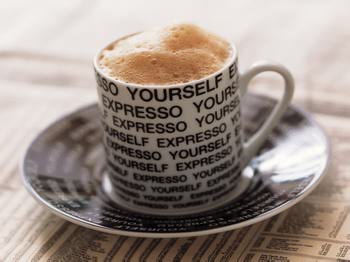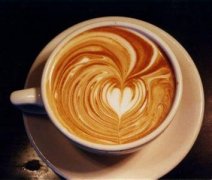General knowledge of Fine Coffee Culture Middle East Coffee Culture
The trend of Taiwanese drinking coffee, from individual products to fancy styles, from refreshing to leisure, and from urban to rural areas, has become a way of life. It has been popular for more than 50 years, and it has become more and more out of control. I am also involved in it and never return. And do people in the Middle East, like Taiwanese, drink coffee? In the end, those men and women who look smoky on TV, whose heads and faces are always wrapped in scarves and are very different from life in Europe and America, do they drink or not?
Because of my work, I often travel in and out of the Middle East. Every time I prepare to leave the Middle East to pack my bags without coffee, I must be preparing a large bag of coffee for fear that I will not be able to drink coffee in the Islamic world. I have the impression that drinking coffee is a Western thing, and it is not easy to drink coffee in the mysterious Middle East, is it?
From Ethiopia to Yemen, coffee was first popular in the Middle East.
According to the evidence studied by Bernard Lewis, an American Middle East scholar and expert, coffee originated in Ethiopia and may be named after Ethiopia's province of Kaffa, where wild coffee plants still grow today; coffee spread from Kafa to Yemen in the 14th or 15th century.
An Egyptian scribe said, "at the beginning of the 16th century, news came to us in Egypt that a drink called qahwa was popular in Yemen. The Sufi shaykhs and others used it to support sleeplessness when doing kungfu worship." The author went on to explain that the coffee was brought back by a traveler to Ethiopia, who found that coffee was widely used in Ethiopia: when he came back from Aden, he felt unwell and remembered ("Gahua"). He drank it and felt much better. He found that it has the characteristics of driving away fatigue and burnout, bringing some liveliness and vitality to the human body.
As a result, when he became a Sufi friar, he and his fellow initiates in the city of Aden began to use this drink. Then, all the people, from scholars down to Li people, drank it according to his example, hoping to be helpful in reading and other work and craftsmanship. So it continued to spread.
The certainty of coffee spread, and by 1511, drinking coffee had been seen in the holy city of Mecca, and the fashion was brought westward to Egypt, Syria, the hinterland of Ottoman, and eastward to Iran, no doubt, thanks to pilgrims and merchants. Coffee was the main drink in these places until the early 19th century when two Syrian businessmen opened their first coffee shop in Istanbul.
From Yemen to Vienna, coffee is sweeping Europe again!
Europeans were the first to talk about coffee, coffee drinkers and the literature of coffee shops. Gianfrancesco Morosini, the Vatican's envoy to Istanbul, commented on a coffee shop he had visited in an account in 1585: these people were all humble, tacky and unenterprising, just sitting there all day, drinking a black liquid and boiling hot to such an extent that they could tolerate it. It is extracted from a seed they call "Cavee".
George of England. When George Sandys visited Turkey in 161st ○, he was even more disdainful. "they sat there [in their coffee shop] chatting and sipping a drink called Coffa. It's as hot as it can stand; it's as black as soot, it tastes like it, it doesn't look like... "
However, Europeans have also accepted the flavor of coffee and coffee and the flavor of coffee houses, while coffee, which is mainly produced in Yemen, has quickly become an important item on the export list of Europe in the Middle East.
The first coffee shop in Europe opened in Vienna after the second Turkish siege. The operator is an Armenian who has a patent; he provides intelligence for the Austrian government behind the Turkish military line and then proposes this exclusive patent as a reward.
The Koran forbids alcohol, there are no pubs, only cafes and teahouses
After many years of walking in the Middle East, including Egypt, Syria, Jordan, Lebanon, Turkey, Tunisia, etc., I found that my past idea was completely wrong. Islam, unlike Christianity and Judaism, forbids alcoholic beverages, and drinking does not have to be done publicly and privately. There are no pubs or equivalent places, cafes and teahouses similar to those in the Western world, so fill this void in most countries in the Middle East. It is easy to understand why coffee is so popular and why coffee houses have become important social centers.
Therefore, it is very common for Arabs to drink coffee, which is not only a necessity in daily life, but also has a history of drinking coffee for as long as 500 years, which is on a par with Europeans and Americans.
There is an English phrase "Take a break", which means a break or drink time. At this time, the British drink tea, the Americans and Taiwanese may drink tea or coffee, and most Arabs drink coffee. The French like to drink coffee at the floor-to-ceiling window, watching passers-by outside, and being looked at by passers-by, while Italians prefer to sip coffee in open-air cafes, while almost all cafes in Austria have curtains, and people drink coffee behind hanging curtains. European locals come in for a cup of coffee, which takes about 5-10 minutes, and most of them are tourists. Therefore, the same cup of coffee has different prices. It's cheaper to drink sitting than standing up.
Cafes in the Middle East have several characteristics; very few women appear in traditional cafes, which is very different from the fact that there are more women in Taiwan cafes, and they also cover their whole bodies. Occasionally elegant women in fashionable clothes can still be seen, but women can hardly be seen in high-end restaurants and fine restaurants, in streets or in open cafes in urban and rural areas.
Most cafes play Arabic music, have never heard of Western music, men who smoke cigarettes gather, play chess together except chat, seldom read books, newspapers and magazines, and never see people who use computers to surf the Internet in cafes.
In addition, the decoration in traditional Arab cafes is completely different from that in the West. Instead of sitting on chairs, people lean or sit on various cushions or mattresses, on chairs or couches covered with blankets or woven blankets. Food and drinks are taken from Seiko inlaid metal plates, and the walls are decorated with traditional Islamic customs.
Nowadays, in roadside coffee shops full of streets and villages, it is very common for men to enjoy a cup of coffee and a hookah besides drinking coffee. This is an important leisure activity for the middle and lower classes. A hookah takes about 20 minutes to soak and drink five or six times a day. The style of coffee is not much, the container is not as exquisite as the West, and the most popular style is Turkish coffee. Turkish coffee is brewed over fire and served without filtration, accompanied by a pot of boiled water used many times.
Do women in the Islamic world drink coffee? Once, I asked a Muslim female friend in Tunisia: "Why do only men drink coffee here?" and she replied, "me, too!" I drink it almost every day at home.

Important Notice :
前街咖啡 FrontStreet Coffee has moved to new addredd:
FrontStreet Coffee Address: 315,Donghua East Road,GuangZhou
Tel:020 38364473
- Prev

The "Coffee Culture" of the Office of General knowledge of Fine Coffee Culture
For a more respectable Office, there are always two shiny coffee pots, and coffee is provided free of charge around the clock. A little more particular, there will even be a small coffee shop for employees to enjoy during the break. As a result, the jingling music of stirring coffee with a metal spoon here has become a kind of corporate culture. Free coffee, for
- Next

American Coffee Culture San Francisco uses coffee spoons to measure life
San Francisco is indeed a holiday paradise. The cultural and historical scenery is relaxed and pleasant, the restaurant delicacies are surprising, and the magnificence of the hotel is beyond imagination. There are also all kinds of theatrical performances and sports in the big American cities that tourists expect. Overlooking San Francisco from the air, the city is as neat as a transistor radio: exquisite Victorian buildings, four
Related
- How did the Salvadoran coffee industry develop in Central America?
- What exactly does the golden cup extraction of coffee mean?
- The Origin of Coffee flower
- [2023 Starbucks World Earth Day] there are more meaningful things besides free Starbucks coffee!
- What kind of coffee is there in Spain? 9 Flavors of Spanish Coffee
- Aromatic African coffee| Kenya's coffee culture and historical production area
- Liberica Coffee Bean knowledge: the characteristics of Liberian Coffee beans of the three original species of Coffee beans
- The origin and formula of Spanish latte introduces the taste characteristics of Bombon coffee in Valencia, Spain.
- How to adjust the solution of over-extracted coffee
- What is the tasting period of coffee beans? What is the period of coffee and beans? How should coffee wake up and raise beans?

